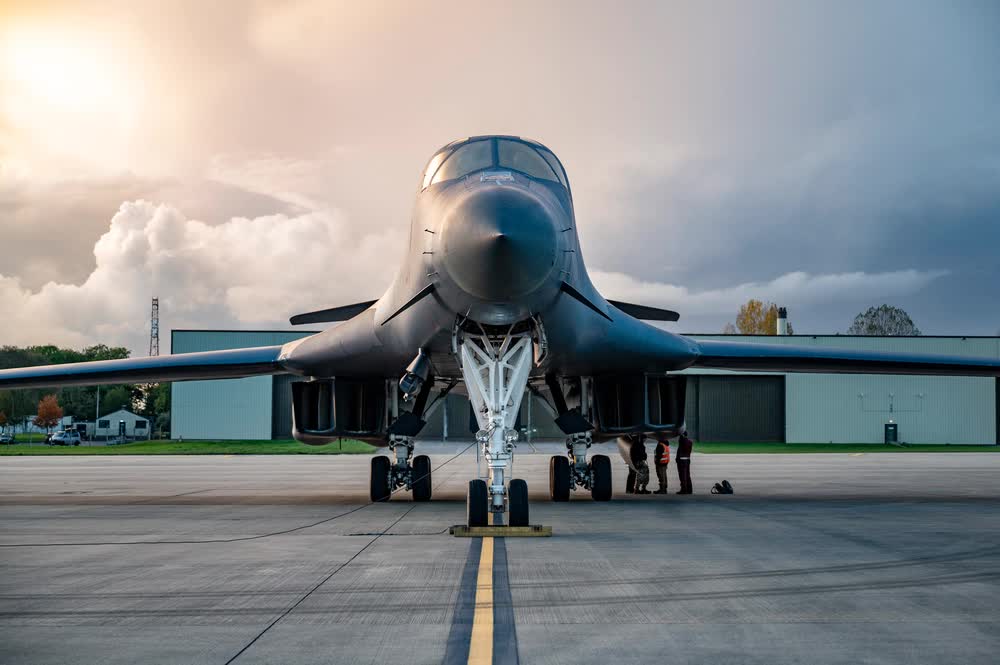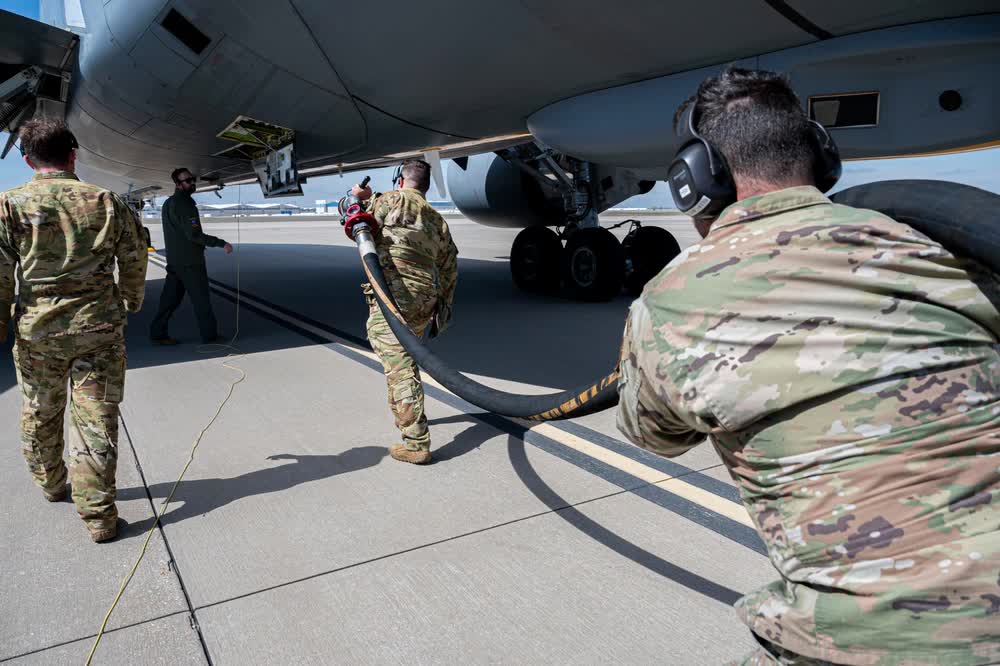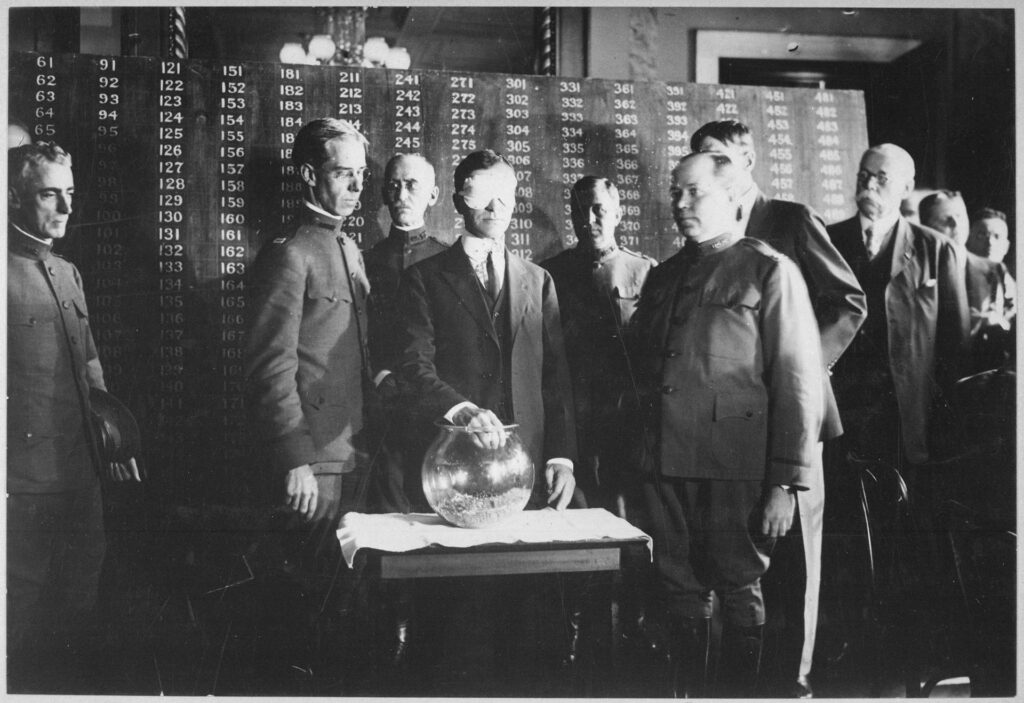Air Force adds dozens of hot-pit refueling sites as it preps for future war
- By Hope Seck
Share This Article

The idea behind hot-pit refueling is simple: a military aircraft touches down on an airstrip and leaves its engines running while a ground crew brings out a fuel hose and administers a fill-up on the spot. The plane can then take off again without ever cooling down or wasting any downtime in a hangar. The process can reduce the four to six hours needed for a plane to remain on the ground to just 60 minutes between flights.
It’s a simple concept, but one the Air Force is counting on to help it fight effectively in austere and far-distributed regions like the Pacific, where the service might not have the luxury of a spare aircraft on the sidelines. While hot-pit refueling has long been in the service’s repertoire, the Air Force is now moving aggressively to prepare more sites downrange for the mission, while integrating the practice more thoroughly into training and deployed operations.
In January 2023, a team from Fairchild Air Force Base – nicknamed “America’s Super Tanker Wing – traveled to the Pacific to survey airfields for their ability to support hot-pit refueling for the KC-135 Stratotanker. The 67-year-old KC-135 is the Air Force’s first jet-powered aerial refueling tanker, performing the critical mission of filling up fighters and transport aircraft in flight. At 136 feet long and up to 322,500 pounds with a 130-foot wingspan, it needs, among other things, ample space for safe airstrip refueling.
Captain Blake Kidd, chief of tactics for the 93rd Air Refueling Squadron, told Sandboxx News that the site survey team also assessed the spacing of buildings from the planned hot-pit refueling locations; the condition of the pavement on the airstrips; and whether the available fueling facilities and equipment were compatible to support the mission.
In all, he said, the survey team certified six new hot-pit refueling locations in the Pacific, including Royal Australian Air Force Base Darwin in Australia.
“We were the first tanker to actually do hot-pit refueling in Australia in Air Force history,” Kidd said.
Other newly certified hot-pit locations, he said, couldn’t be disclosed for operational security reasons.
That survey represents just a piece of a larger Air Force effort to bring hot-pit capabilities to all the places it operates. To date, roughly 45 locations have been certified, according to 92nd Air Refueling Wing spokeswoman 2nd Lt. Sidney Walters. In the last few years, the service has also expanded the mission to new airframes and contexts. The first KC-135 hot-pit refueling took place in 2020; it was conducted in Europe for the first time in 2021, at Royal Air Force Mildenhall in the United Kingdom. The same year, a KC-135 conducted the first hot-pit refueling within the continental United States at Fairchild Air Force Base.
The Air Force’s B-1 Lancer and B-2 Spirit bombers have also made recent hot-pit history, conducting first-time refueling missions in locations like Romania, Turkey, and Norway.
Related: America’s secret stealth aircraft you’ve never heard of

The ability to maximize flight time and operate downrange with a minimum number of aircraft dovetails with the Air Force’s Agile Combat Employment (ACE) concept, whereby the Air Force wants to operate planes from a wide range of minimally equipped forward locations all serviced by a larger “hub” base. Through ACE, the Air Force wants to make its air combat units more flexible and their forward movements less predictable, while equipping squadrons to operate effectively from minimally equipped locations that might be shared by other U.S. services or allied militaries.
“What hot pit refueling does for us is it allows us to minimize our time on the ground. And with ACE doctrine, the whole point is to be agile,” Kidd told Sandboxx News. “So we have more time to react to threats versus more time spent on the ground figuring out maintenance issues or having to gas up the jet in the standard procedure.”
The Fairchild team is “constantly looking for” new locations that can be certified for hot-pit refueling, and is working to expand training on the procedure, both at home station and downrange, Kidd said. “In addition to expanding the service’s operating footprint and getting the most out of its aircraft,” he added, “the practice can potentially decrease vulnerabilities in conflict.”
“If we can be on the ground for a shorter amount of time, it’s less time for the enemy to target us,” he said. “And we want to complicate that even more by increasing the number of airfields that we’re operating in.”
Read more from Sandboxx News
Related Posts
Sandboxx News Merch
-

‘AirPower’ Classic Hoodie
$46.00 – $48.00 Select options This product has multiple variants. The options may be chosen on the product page -

‘Sandboxx News’ Trucker Cap
$27.00 Select options This product has multiple variants. The options may be chosen on the product page -

‘Sandboxx News’ Dad Hat
$27.00 Select options This product has multiple variants. The options may be chosen on the product page
Hope Seck
Hope Hodge Seck is an award-winning investigative and enterprise reporter who has been covering military issues since 2009. She is the former managing editor for Military.com.
Related to: Airpower, Military Affairs

Military draft registration is going down, so Congress wants to take action
Sandboxx News
-

‘Sandboxx News’ Trucker Cap
$27.00 Select options This product has multiple variants. The options may be chosen on the product page -

‘AirPower’ Classic Hoodie
$46.00 – $48.00 Select options This product has multiple variants. The options may be chosen on the product page -

‘AirPower’ Golf Rope Hat
$31.00 Select options This product has multiple variants. The options may be chosen on the product page -

‘Sandboxx News’ Dad Hat
$27.00 Select options This product has multiple variants. The options may be chosen on the product page
